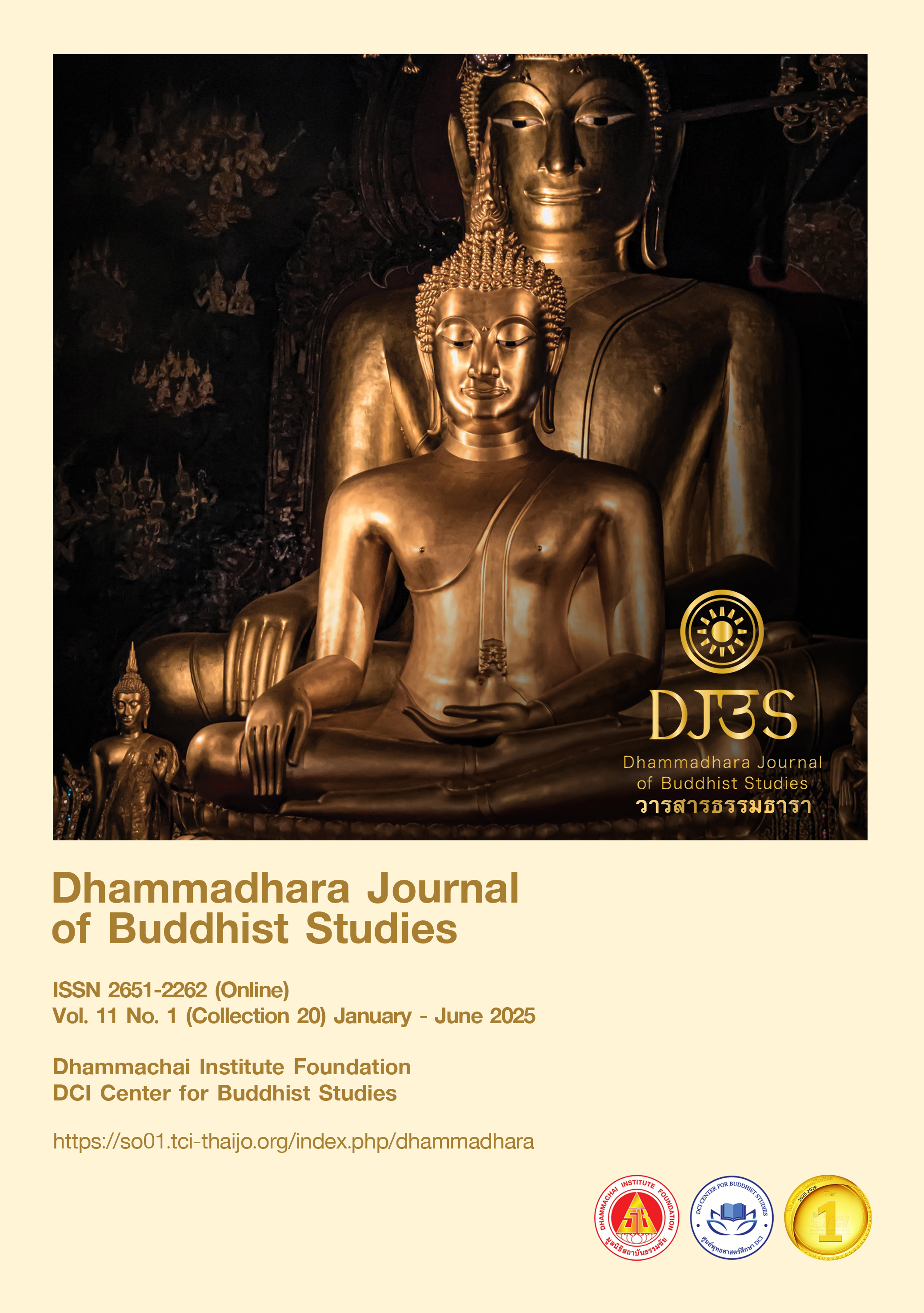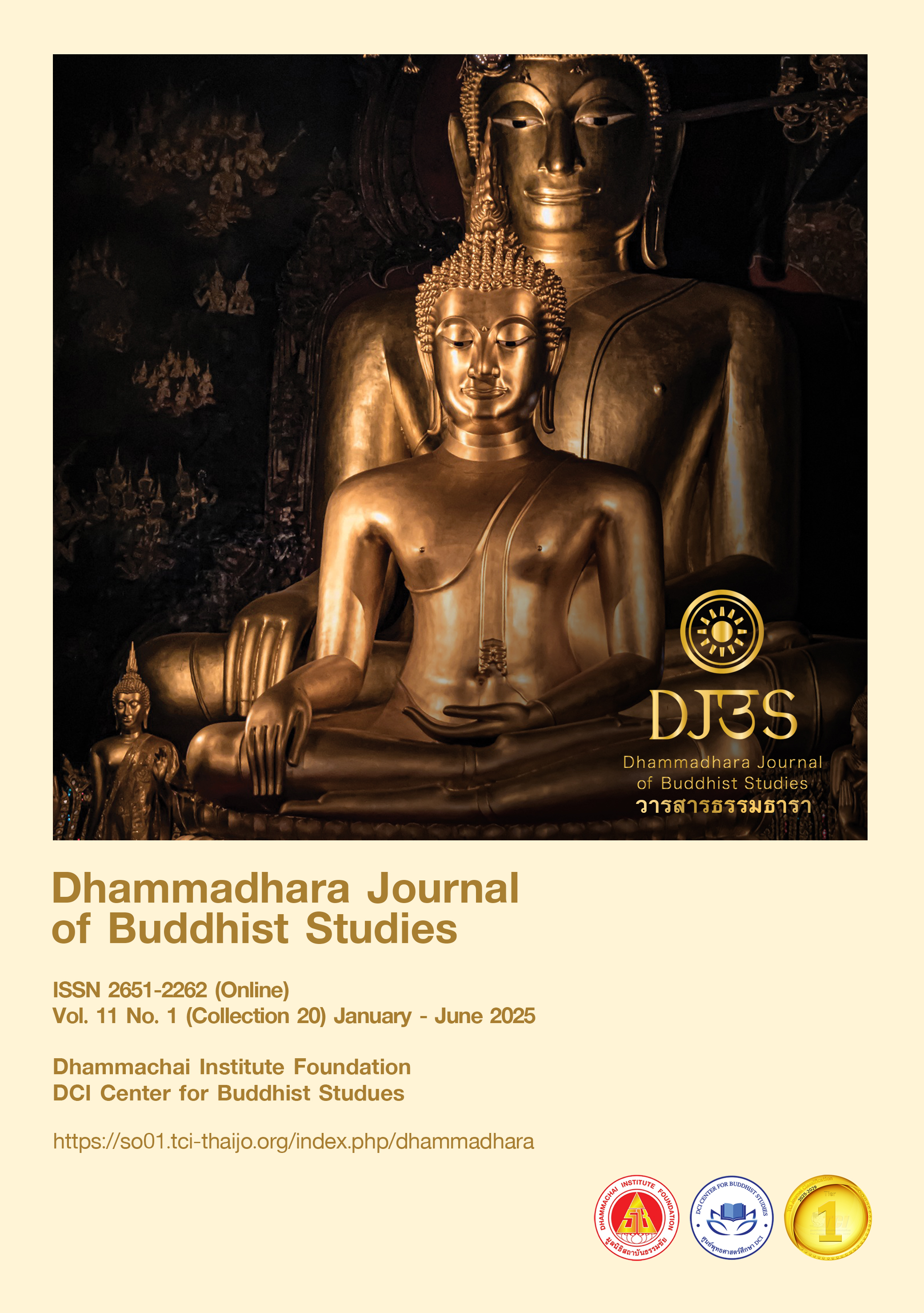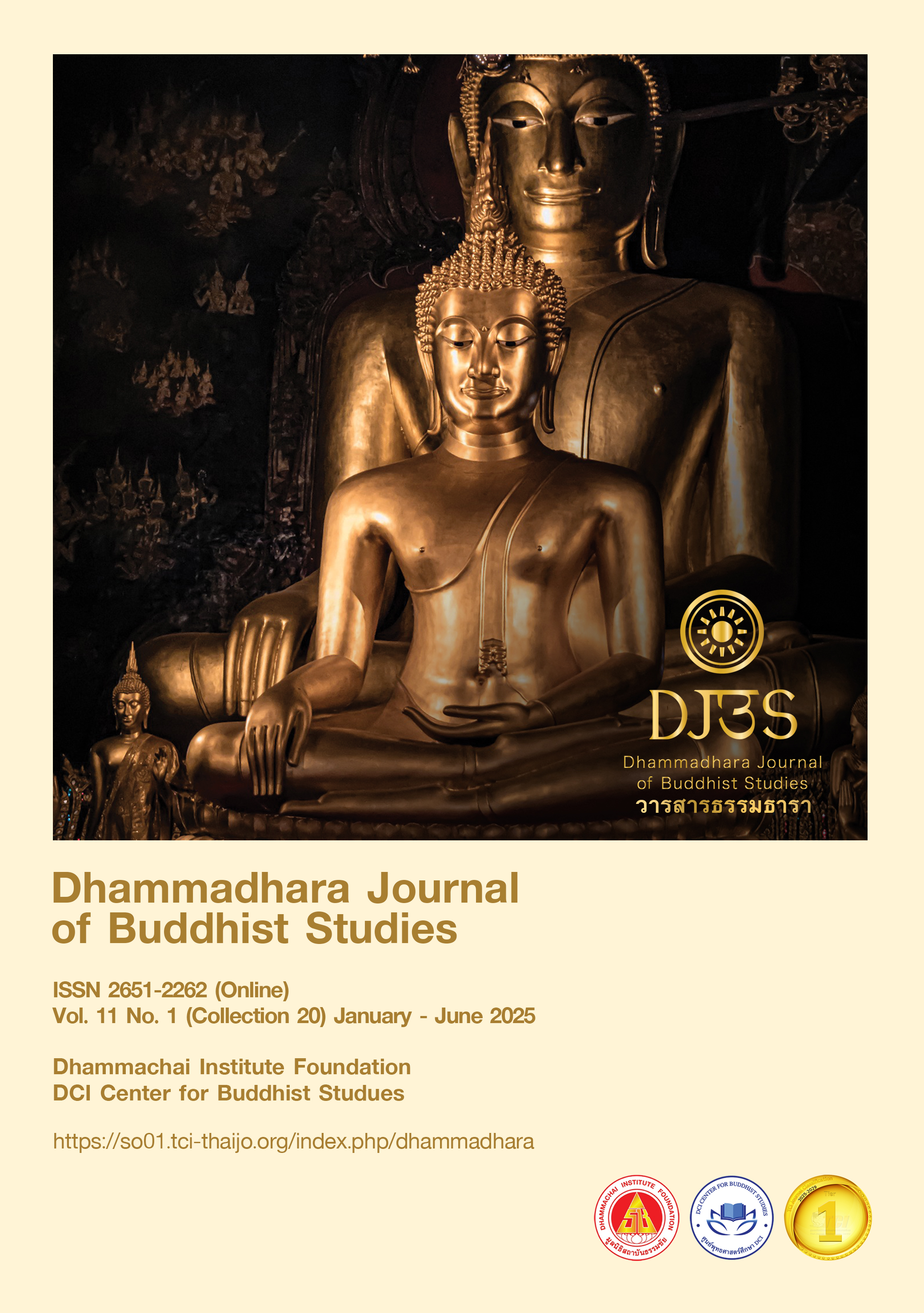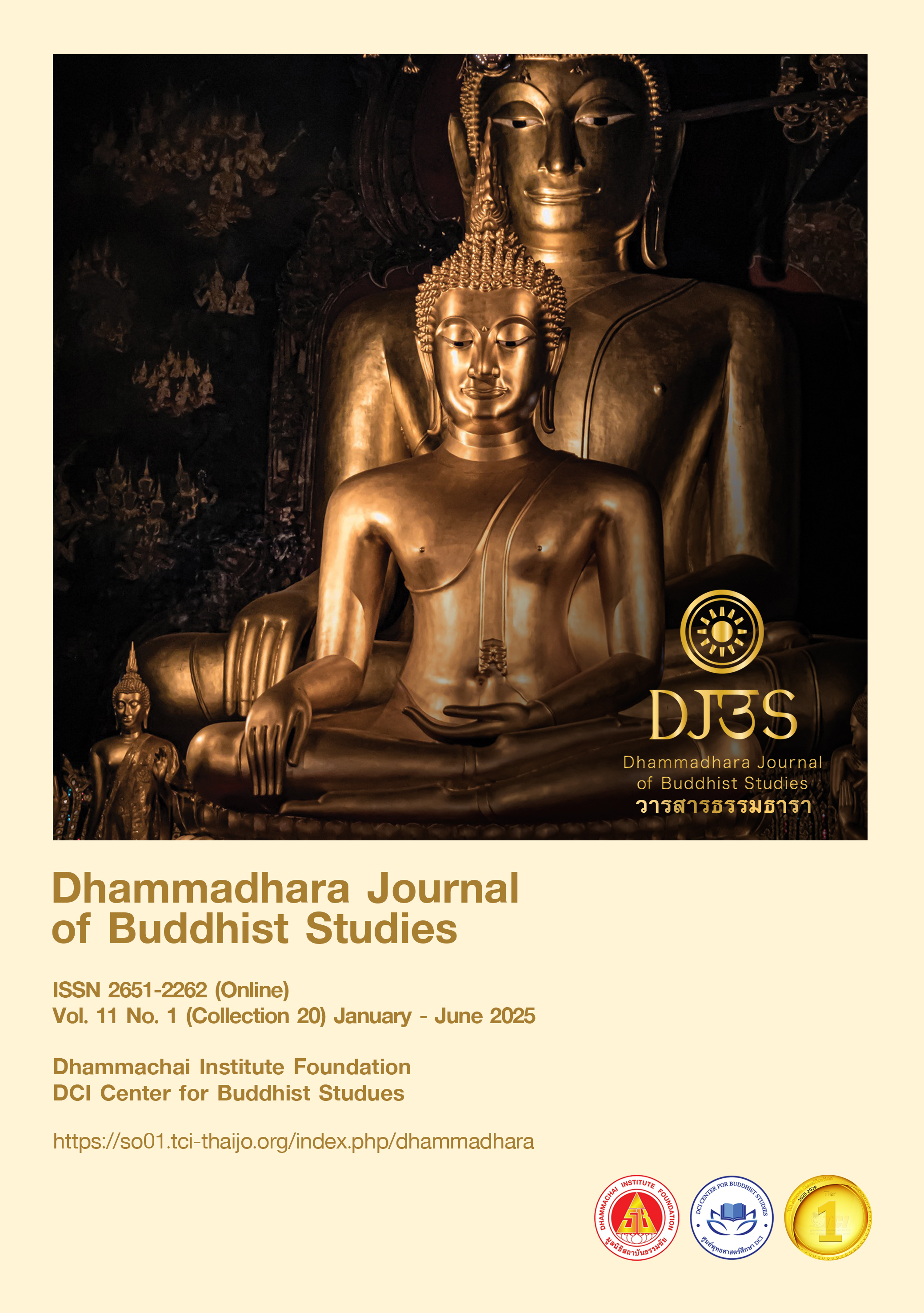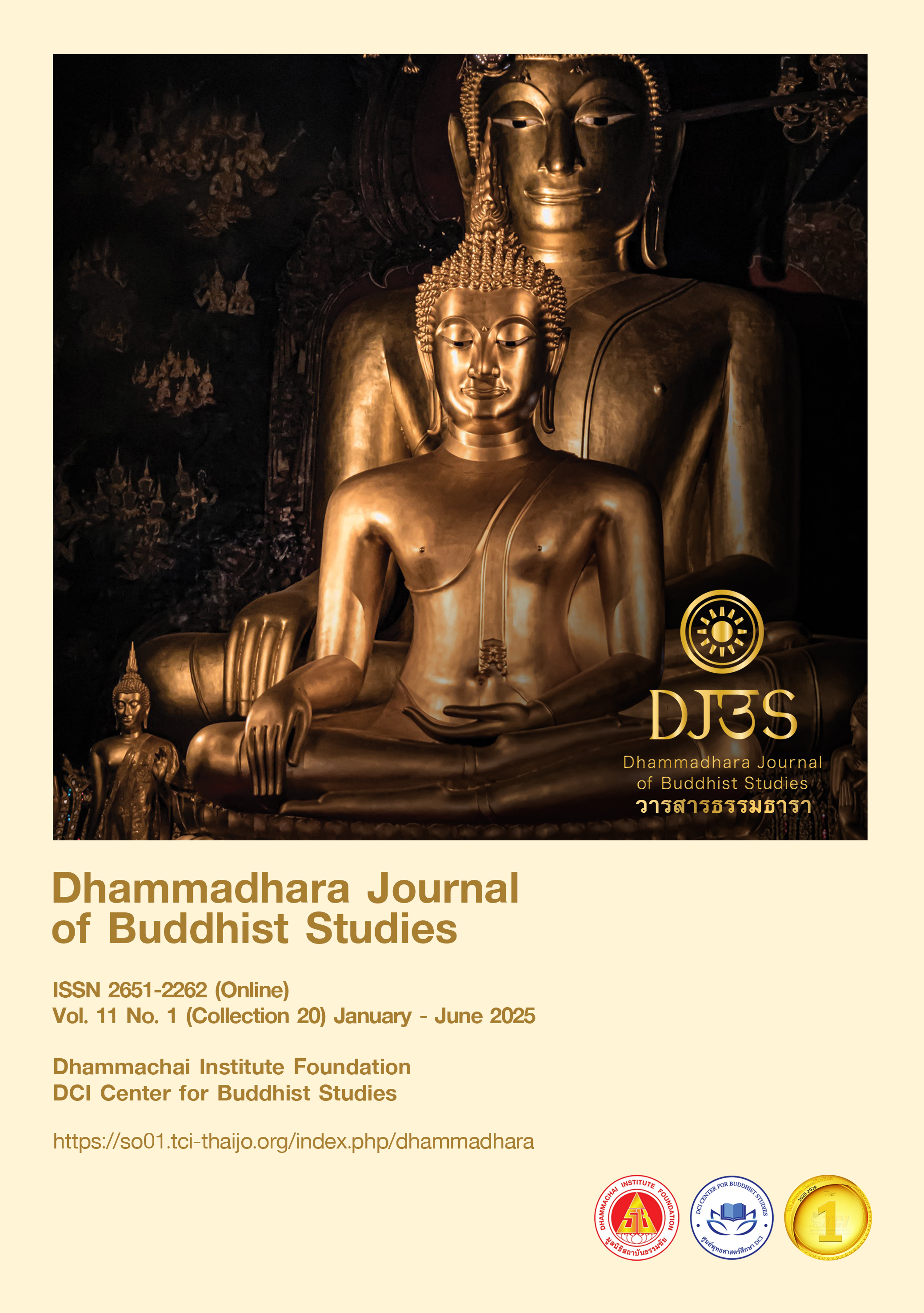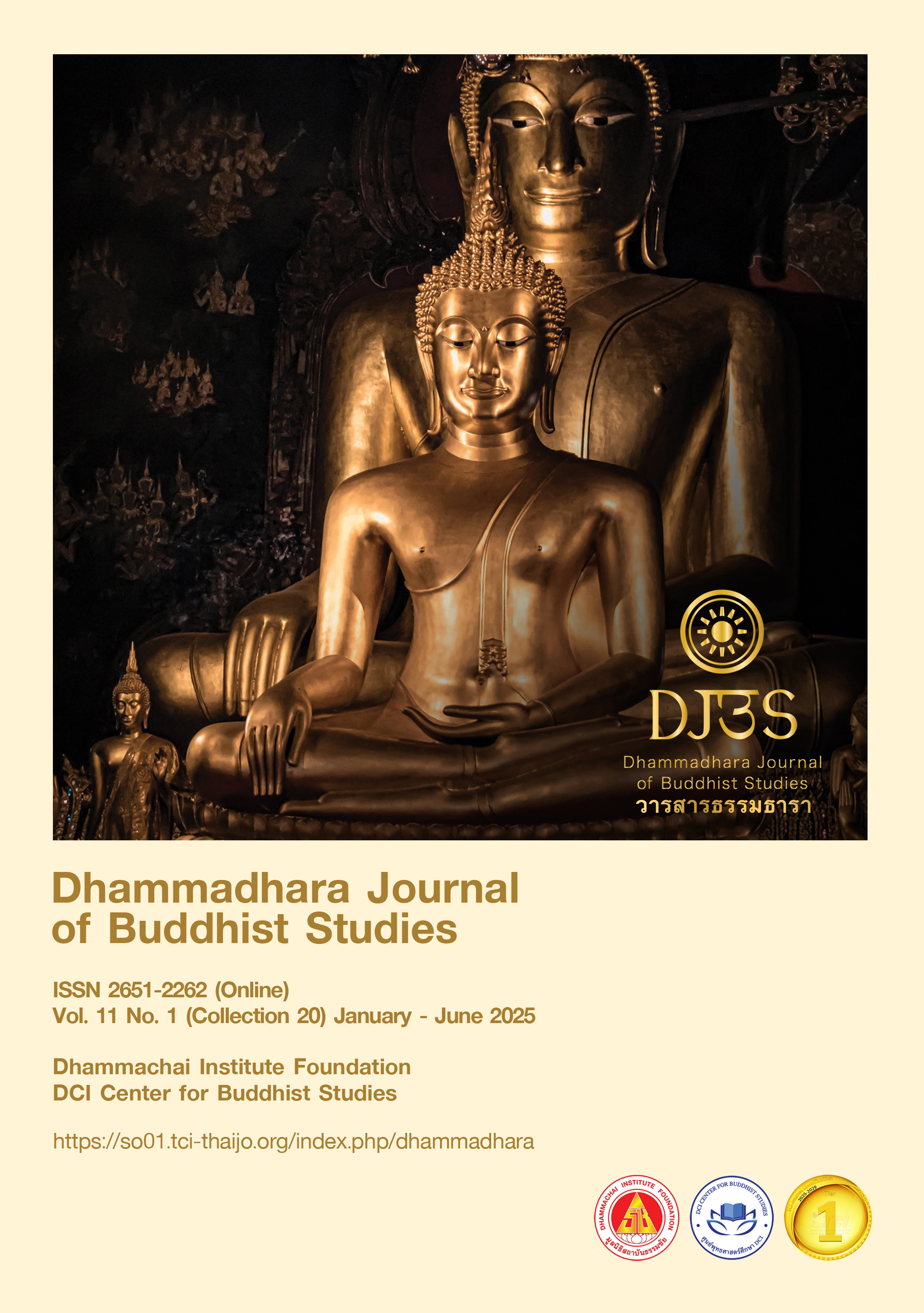
วัตถุประสงค์และขอบเขต
วารสารธรรมธารา (Dhammadhara Journal of Buddhist Studies, DJBS) ISSN 2651-2262 (Online) เป็นวารสารวิชาการทางพระพุทธศาสนาของมูลนิธิสถาบันธรรมชัย อำเภอบางบาล จังหวัดพระนครศรีอยุธยา อยู่ภายใต้การดำเนินงานของศูนย์พุทธศาสตร์ศึกษา DCI มีวัตถุประสงค์เพื่อการส่งเสริม สนับสนุน และเป็นแหล่งข้อมูลในการเผยแพร่ผลงานวิจัยและบทความวิชาการให้กับคณาจารย์ นักวิชาการ นักวิจัย และผู้สนใจ โดยมีเนื้อหาทางพระพุทธศาสนา 2 กลุ่ม คือ กลุ่มที่ 1 พระพุทธศาสนาเชิงคัมภีร์ คือ มีการศึกษาวิจัยเนื้อหาในพระไตรปิฎกในภาษาต่าง ๆ เช่น ภาษาบาลี ภาษาไทย ภาษาอังกฤษ ภาษาทิเบต ภาษาจีน ภาษาญี่ปุ่น เป็นต้น กลุ่มที่ 2 พระพุทธศาสนาเชิงประยุกต์ คือ การนำหลักธรรมในพระพุทธศาสนาไปประยุกต์เข้ากับศาสตร์สมัยใหม่ เช่น งานวิจัยนวัตกรรมเชิงพุทธด้านมนุษยศาสตร์และด้านสังคมศาสตร์ ทั้งนี้ผู้เขียนสามารถแยกประเภทของบทความตามเนื้อหาหลักได้ดังนี้ กลุ่มที่ 1 พระพุทธศาสนาเชิงคัมภีร์ ประกอบด้วย คัมภีร์ทางพระพุทธศาสนาสายจารีตต่างๆ ประวัติศาสตร์ทางพระพุทธศาสนา และกลุ่มที่ 2 พระพุทธศาสนาเชิงประยุกต์ ประกอบด้วย งานวิจัยนวัตกรรมเชิงพุทธบูรณาการ ด้านปรัชญา ด้านประเพณีและวัฒนธรรม ด้านจิตวิทยา ด้านการศึกษา ด้านศิลปกรรม ด้านเทคโนโลยี ด้านสิ่งแวดล้อม เป็นต้น
ประเภทบทความที่รับพิจารณาตีพิมพ์
วารสารธรรมธาราเปิดรับบทความ 4 ประเภท คือ
1) บทความวิจัย มีการศึกษาวิจัยและมีรูปแบบโครงสร้างอย่างถูกต้องตามระเบียบวิธีวิจัย ประกอบด้วย วัตถุประสงค์ วิธีดำเนินการวิจัย ความเป็นมา(บทนำ) ผลการวิจัย อภิปรายผลการวิจัย องค์ความรู้ใหม่ และบทสรุป
2) บทความวิชาการ มีการศึกษาค้นคว้าอย่างลึกซึ้ง แล้วนำเสนอความรู้ใหม่ที่ได้มีรูปแบบประกอบด้วย บทนำ เนื้อหา ความรู้ใหม่ที่ได้จากการศึกษา และบทสรุป
3) บทความแปลจากภาษาต่างประเทศ เป็นการนำงานวิจัย งานวิชาการ หนังสือ ที่เขียนเป็นภาษาต่างประเทศ แปลนำเสนอเป็นบทความเพื่อนำความรู้มาแลกเปลี่ยน เปิดมุมมองใหม่จากทัศนะของนักวิชาการต่างประเทศ ทั้งภาษาจีน ภาษาญี่ปุ่น ภาษาอังกฤษ ภาษาเยอรมัน เป็นต้น ทั้งนี้ต้องได้รับการยินยอมจากเจ้าของผลงานและสำนักพิมพ์ รวมทั้งผู้เขียนต้องนำเสนอมุมมองของตนเองต่องานชิ้นนั้นด้วย
4) บทความพิเศษจากผู้เชี่ยวชาญ เป็นผลงานเขียนจากนักวิชาการผู้ทรงคุณวุฒิระดับสูงทั้งในและต่างประเทศ ที่ได้รับการกลั่นกรองและอนุมัติจากบรรณาธิการและกองบรรณาธิการวารสารฯเรียบร้อยแล้ว เพื่อนำเสนองานเขียนให้ผู้อ่านได้รับประโยชน์สูงสุด
ทั้งนี้บทความทุกประเภทจำนวนคำเฉลี่ยไม่ควรเกิน 8,000 คำ และขอแนะนำให้มีรูปภาพ ตาราง และแผนภูมิ จะช่วยให้ผู้อ่านเข้าใจบทความได้ดีมากขึ้น
วารสารธรรมธารา ตีพิมพ์ปีละ 2 ฉบับ
ฉบับที่ 1 มกราคม - มิถุนายน
ฉบับที่ 2 กรกฎาคม - ธันวาคม
คำแนะนำสำหรับผู้เขียน
หลักเกณฑ์การอ้างอิงของวารสารธรรมธารา คลิกเพื่ออ่าน
ตัวอย่างแบบฟอร์มการจัดหน้าบทความ [.word] [.pdf]
ดาวน์โหลดแบบฟอร์ม [download]
ISSN 2651-2262 (Online)
Announcements
Current Issue
Vol. 11 No. 1 (2025): (Total Issue 20) January - June
The 20th issue of Dhammadhara Journal has undergone several improvements and developments, including changing the publication format from print to online and updating the cover design, logo, and journal abbreviations. These changes were made following recommendations from the Thai Journal Citation Index Center (TCI) to align with international journal standards.
This issue contains five articles, as follows:
1. The research article titled “An Analytical Study of Buddha’s Characteristics in Suttas of Pali Tipiṭaka” by Phramaha Uthai Padthapim and Asst. Prof. Dr. Sompornnuch Tansrisook is a paper with clear content, offering a detailed and in-depth analysis of the Buddha’s qualities, surpassing previous research. It presents Pali evidence from the Tipiṭaka and provides new knowledge to the academic community.
2. The research article titled “Synthesis of Articles about Bhikkhunis in Thai Journals Online (ThaiJo) from 2003-2023” by Asst. Prof. Dr. Montree Sirarojananan and Mr. Apirak Namwicha found that articles on bhikkhunis generally focus on two distinct points: 1. Reform-oriented articles aiming for societal acceptance of bhikkhuni ordination, and 2. Conservative articles that reject the acceptance of Theravada bhikkhunis in Thailand, arguing that the lineage of Theravada bhikkhuni ordination has been broken. The issue of bhikkhunis remains unresolved and is unlikely to gain acceptance from the Sangha Supreme Council in the near future.
3. The research article titled “A Conceptual Synthesis of the Relationship between Inner Peace and Social Peace for Sustainable Peace” by Dr. Suchada Thongmalai examines how the human mind, composed of three types of mental states — wholesome qualities (Kusala-dhamma), unwholesome qualities (Akusala-dhamma) such as greed, anger, and delusion, and indeterminate qualities (Abyākata-dhamma) — can cultivate inner peace and contribute to social peace. By practicing the threefold path of generosity (Dāna), moral conduct (Sīla), and meditation (Bhāvanā), wholesome qualities are developed, leading to inner tranquility and fostering sustainable peace in society.
4. The research article titled “Buddhist Psychology Program of Inner Mind for Self-Directed Learning in Early Childhood” by Dr. Unthika Puvapiromquan integrates concepts from Buddhism and Western scholars to create a program that promotes self-directed learning in early childhood. The program consists of 30 activities and was tested with 30 kindergarten students divided equally into an experimental group and control group. The results showed that the program significantly enhanced the self-directed learning abilities of the children. This finding provides valuable insights for those interested in the development of early childhood learning.
5. The article titled “Huayanjing jinshizizhang: A Philosophical Translation in Thai and New Approach to Understanding Avataṃsaka (2)” by Asst. Prof. Dr. Nipon Sasipanudej is a continuation of the first translation. The article may be challenging to understand for those unfamiliar with the topic, but with careful reading, it provides an insightful explanation of Svabhāva-Dhamma such as Pratītyasamutpāda from the perspective of the Avataṃsaka Sutra.
It is hoped that readers will gain knowledge and enjoyment accordingly.
Phragrupalad Suvuttanabodhigun
(Somchai Thanavuddho)
12 February 2025
(Magha Puja Day)
Published: 2025-02-12

